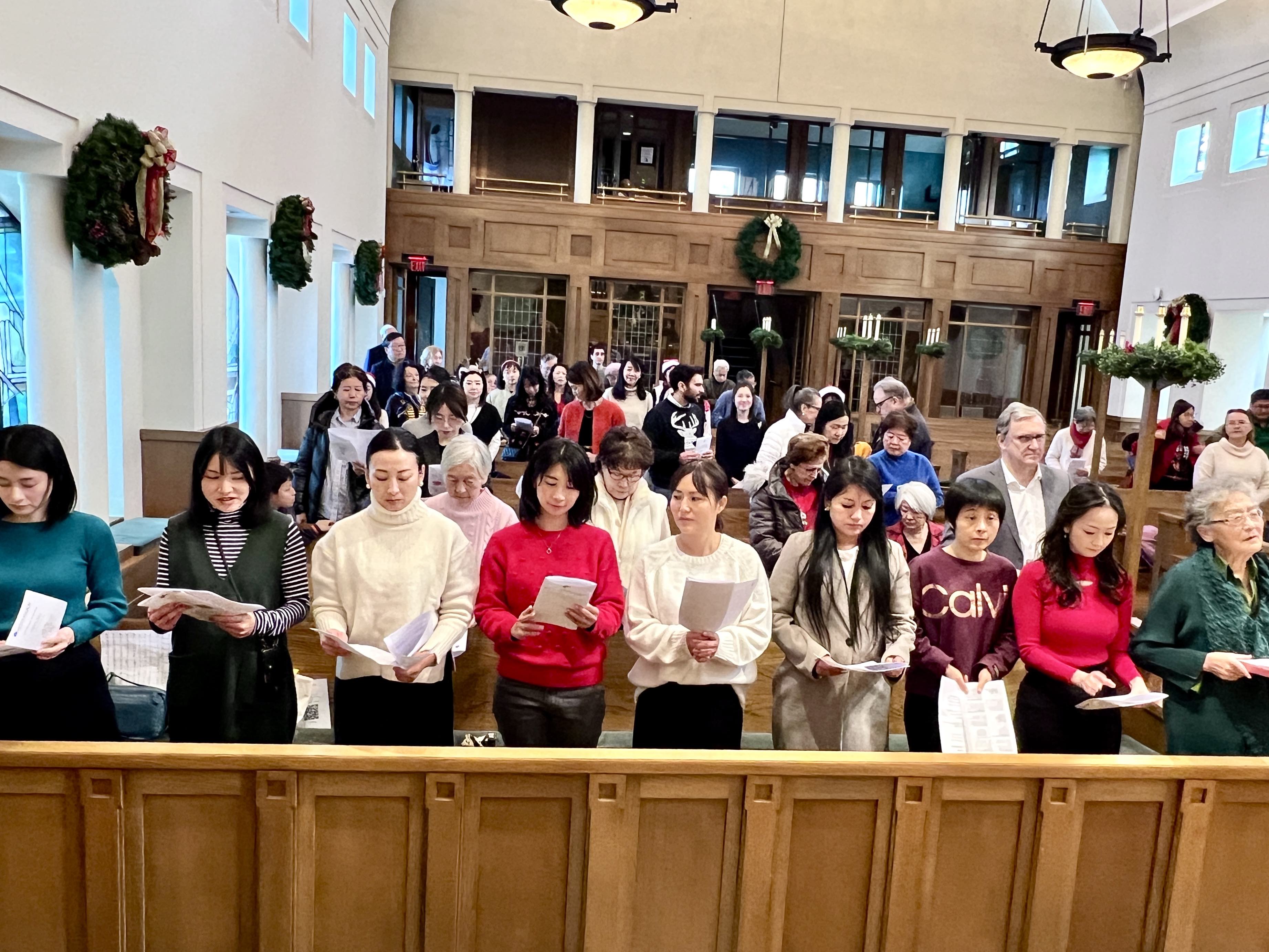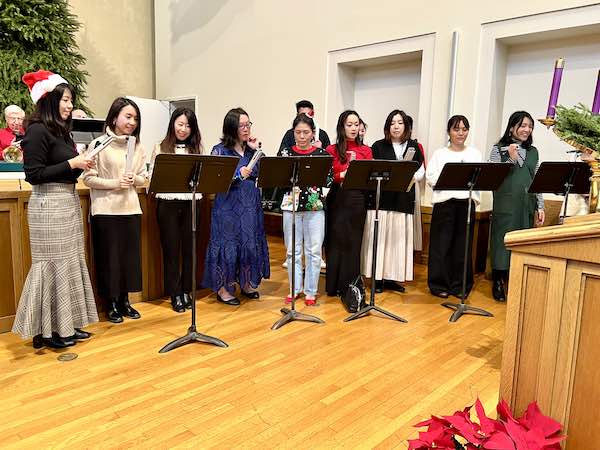CHP To Weigh Fate of Another Home on Dolma Road in Scarsdale
- Details
- Written by: Joanne Wallenstein
- Hits: 2361
 (updated January 17, 2025) In 2012 the Scarsdale Board of Trustees engaged architectural historians to do a “Cultural Resources Survey” of the homes and buildings of Scarsdale. They provided a comprehensive document about the history of Scarsdale and of many of the notable homes that provide neighborhood character and make Scarsdale unique. Take a look at it here.
(updated January 17, 2025) In 2012 the Scarsdale Board of Trustees engaged architectural historians to do a “Cultural Resources Survey” of the homes and buildings of Scarsdale. They provided a comprehensive document about the history of Scarsdale and of many of the notable homes that provide neighborhood character and make Scarsdale unique. Take a look at it here.
At the time, the consultants also delineated a list of “study areas” and recommended that the Village Trustees declare these areas as historic districts so that the homes could be protected from demolition.
One of the areas recommended for preservation was Dolma Road. Here’s what the report says:
“Dolma Road, running from Murray Hill Road to Birchall Road, is a short street lined with exclusive houses on large lots, most erected between 1926 and 1929 (one dates from 1935), primarily for wealthy businessmen and their families. Dolma Road was largely a project of Walter J. Collet, the Scarsdale builder who was responsible for the construction of many substantial houses in the village. Collet claimed that he chose the name Dolma in reference to a mountain range in Bengal, India; just why he made this choice remains a mystery. A long Dolma Road, Collet appears to have been not only the builder, but also the developer. Collet worked closely with the architect Eugene J. Lang, who designed nine of the fifteen houses in the study area. Collet remained the builder of the houses designed by other architects. The Dolma Road houses are large buildings in the American, English, French, and Spanish styles so popular throughout Scarsdale in the 1920s. Among the wealthy owners were life insurance dealer George Hofmann (No. 2); publishers (and, apparently, brothers-in-law) Frank Braucher (No. 4) and Frederick Dolan (No. 6); tobacco merchant George Cooper (No. 8); W. Wallace Lyon (No. 11), Wall Street broker and insurance man; Alden C. Noble (No. 15), chairman of the board of the Merchants Fire Assurance Corporation; Dr. L. T. Webster (No.17), a noted epidemiologist at the Rockefeller Institute; and J. Arthur Bogardus (No. 21), chairman of the board of the Atlantic Mutual Insurance Company.
Considering the size and scale of the houses along Dolma Road, it is remarkable that they survive with such integrity. A few entrances have been altered and additions have been sensitively made, but the street retains the ambiance of a prime suburban locale of the early twentieth century.”
Sadly, Village Trustees never took the next step to designate historic districts, and in the thirteen years since the report was published, many of the noted homes and surrounding trees have been taken down by individuals and developers who replaced them with very large homes.
Dolma Road has not been spared and several homes have come down. A notable home at 11 Dolma Road, which the Committee for Historic Preservation and the Scarsdale Board of Trustees deemed worthy of preservation, has been largely abandoned as a case about its fate sits in court.
Now a developer has applied to take down another Dolma Road home at 17 Dolma Road. The house is not as grand as some of the others on the block but is historic none-the-less.
The Committee for Historic Preservation requested an opinion on whether or not it is worthy of preservation from Andrew Dolkart who was one of the authors of the Cultural Resources Survey.
In the report you can read here he notes the identities of the owners, the names of the architects, the architectural provenance of the house and its distinctive features. He calls it “an English Tudor inspired house modeled after the fifteenth century early Tudor manor houses in England,” with “brick laid in Flemish bond,” an “original oak door ornamented with iron boses” and “half timbering.” He notes that the Dolma Road subdivision was a project of Walter Collet and calls it “one of the finest and most cohesive subdivision in the Village of Scarsdale."
The original owner of the house was Dr. Leslie Tillotson Webster who the Scarsdale Inquirer called, “one of Scarsdale’s most distinguished citizens.” He was a successful medical researcher, on the staff of the Rockefeller Institute and “responsible for the establishment of the special branch of the science of epidemics known as “experimental epidemiology.”
Dolkart notes that the home meets some of the criteria for preservation but it is “not the strongest candidate for preservation as an individual building.” He says, “it is important within the historic group along Dolma Road, although several other houses in this development have recently been demolished.”
The application to raze was filed by neighbor who purchased the property and formed an LLC.
The Committee for Historic Preservation will consider the application at their meeting on Tuesday night January 21 at 7 pm.
Confronting the Challenges of 2024 in 2025
- Details
- Written by: Joanne Wallenstein
- Hits: 2716
 There were many unusual events in Scarsdale in 2024: a magnitude 4.8 earthquake just a few days before a solar eclipse and recent reports of mysterious drones circulating over schools and homes. More earthly events included hundreds of missing school tax bills, a building moratorium, an antisemitic graffiti attack by perpetrators who avoided security cameras and an overnight sneak attack by vandals who smashed 50 car windows without leaving a clue to their identity.
There were many unusual events in Scarsdale in 2024: a magnitude 4.8 earthquake just a few days before a solar eclipse and recent reports of mysterious drones circulating over schools and homes. More earthly events included hundreds of missing school tax bills, a building moratorium, an antisemitic graffiti attack by perpetrators who avoided security cameras and an overnight sneak attack by vandals who smashed 50 car windows without leaving a clue to their identity.
Beyond the uncontrollable the Village and schools confronted some issues that will remain on the agenda for 2025:
Village Trustees have committed to begin work on the pool complex at the end of the 2025 pools season in August, but the question is, what will replace the four pools and locker rooms, all who have exceeded their useful lives. Will we simply rebuild what is there, construct an enhanced version of the existing complex or build a year-round facility to allow for indoor swimming and community activities in every season?
Flooding and our water infrastructure will also remain top of mind. This year the Village did a major culvert project by the library on Olmsted Road and is currently dredging library pond. The school district is also planning to do work on the stream that traverses the Brewster Road side of the school to alleviate flooding. Upcoming Village budgets include $13 million to build stormwater systems to alleviate flooding, but the proposed projects seem to be deferred from one year to the next. Will this be the year the work begins on Sheldrake Road and in flood prone streets near the middle school?
As the year closed, the Mayor announced that weekly pick-up of recyclables would begin in January - a great step forward on the sustainability front. As more residents become concerned about the environment, we encourage the Village to continue to move forward with additional initiatives to improve sustainability in 2025.
Following a six-month building moratorium the Village passed some modest revisions to land use code that grants more power to the land use boards on site plan review, lot coverage, open space requirements, side yard setbacks, floor area ratio calculations and penalties that are designed to strengthen the review process for building applications, reduce the amount of lot coverage and impervious surfaces, reduce the disturbance of property, control stormwater run-off during construction, effect minor changes to home size and setbacks and impose penalties on those who defy the law.
However the Trustees failed to make meaningful revisions to bulk requirements or the tree code, so oversized homes are still being built on undersized lots. It remains to be seen if the changes go far enough to address residents’ concerns or if will more work need to be done to preserve open space and our tree canopy.
These are questions that the current Village Board, and the new Board and Mayor to be elected in March 2025 will need to address.
In the Village residents were alarmed by the slow demise of DeCicco’s. We endured months of empty shelves and calls to the support the struggling store until they finally gave up the ghost in November and announced they would close. Management of the new market need to do a full renovation of the site and they don’t expect to open until late 2025.
Without the draw of a market the downtown continues to struggle. The Scarsdale Business Alliance has taken many steps to improve the environment, including coordination with the county, Sunday Farmer’s Markets and frequent special events to draw more people to shop and enjoy the Village. Despite their efforts, the situation remains tough for leaseholders. Prohibitive rents and limited parking make it difficult to storeowners to garner a profit, and we are hopeful that the Village can attract new retailers to replace the beer bar and cheese shop that recently closed.
The school administration continues to respond to challenges posed by social media and technology. The district now requires high school students to dock their phones on the way into class, and a movement called “Wait Until Eighth” has arisen to urge parents to hold off purchasing smart phones for kids until eighth grade.
Another interesting debate occurred about the fifth grade sex education program. The inclusion of content about gender expression and gender identity and the decision to teach the classes in mixed gender groups raised objections from some parents and were cheered by others. As times and attitudes change, education changes too, and some were ready for it and others were clearly not.
Seeking to decrease the pressure on high school students, this year the high school implemented a new grading policy called the Rolling Gradebook. The goal is to smooth grading from quarter to quarter and give students the chance to recover from a single low grade or failed test that could skew their average. Some have cheered the change but others claim it has not been uniformly applied and is the cause of additional student stress.
As the school board embarked on their series of budget meetings for the 2025-26 school year, they received a sobering report of the district’s superintendent for business. He unveiled a long term model that showed that if the district continues to use reserves and excess revenues to fund the following year’s budget, in just two years the district will use up all their reserve funds.
Specifically, Lennon’s projection shows that for the 2027-28 school budget, if the district continues to meet the tax cap and no other changes are made to revenues or expenses from the projections reserves will go into negative territory.
Why the drain? In the past ten years, the number of full time employees has grown 11.7%, adding 70 employees to the headcount which grew from 596 to 666 at a time when school enrollment decreased from 4,821 students in 2014-15 to 4,703 students in 2024-25. Some of this increase comes from a move to expand the special education program and bring special needs students who were served outside the district into the district. More growth came from an expansion of the special education program to provide more class options and services for special education students at all grade levels. With Assistant Superintendent Rauschenberg calling for additional staff for 2025-26 the Board will need to make some hard decisions about balancing the special education budget against the long-term financial health of the Scarsdale Schools.
So what do all these Village and school decisions have in common? Though they are under the authority of two different boards, everything is funded from the pocket of Scarsdale taxpayers. We’ve all come to expect only the best from Scarsdale Village and the Scarsdale Schools and hope that both boards will reach consensus on solutions that will continue this level of service.
Barring any further rumblings from beneath the surface of the earth, or solar phenomenon above, here’s to another productive year in Scarsdale. We thank all the smart and savvy volunteers who have taken on this hard work and we wish them another successful year in our unique Village.
A Holiday Carol in Six Languages
- Details
- Written by: Bill Doescher
- Hits: 1222
 LIA Students and Teachers Singing Silent Night in their Own Languages SimultaneouslyIt could have been held at the United Nations on the eastside of Manhattan.
LIA Students and Teachers Singing Silent Night in their Own Languages SimultaneouslyIt could have been held at the United Nations on the eastside of Manhattan.
But it wasn’t.
It actually happened in the sanctuary of the Hitchcock Presbyterian Church on Greenacres Avenue in Scarsdale. During the singing of the classical Silent Night Christmas Carol at the church’s Living in America (LIA) 2024 Christmas event last Thursday morning, December 19, the students and the teachers sang in their native tongues during the second time around after all had sung the first verse only in English.
Remarkable: All at the same time in English, Chinese, Farsi, Japanese, Spanish, and Russian. Some exciting sight to behold and hear.
Confusing, no.
Spectacular? Unusual? Amazing? Only in America?
 LIA Students Accompanying O Little Town of Bethlehem on the Handchimes.
LIA Students Accompanying O Little Town of Bethlehem on the Handchimes.
For sure, yes, all of the above, and certainly something to write home about to the students’ relatives in their home countries.
LIA at Hitchcock is indeed one of the best-kept secrets in Scarsdale. It has been highly successful for more than 49 years, filing a bunch of rooms at the church on Thursday mornings for very professional give-and-take classes during the school year.
According to Church Member Diane Gismond, the LIA lead coordinator at Hitchcock, “Many of the students describe Thursday mornings as the highlight of their week and are extremely sad to leave us when they move back to their home countries.” Gismond also is one of the 13 volunteer teachers in the program.
 Students Singing Gift Wrapped.
Students Singing Gift Wrapped.
Hitchcock offers LIA as a courteous and warm place for the students to learn about American culture, make friends, and study English as a second language. There are currently 80 students from China, Colombia, Georgia, Iran, Japan, Peru, Russia, Spain and Taiwan. Fifty-six percent of those students have attended the program for at least two program years and several for many more.
Watching the classes in action and viewing the smiles all around, it is obvious that there’s no question LIA is a win-win for everybody.
Photos by Diane Gismond.
Drones Abuzz Over Scarsdale: What Do You Think?
- Details
- Written by: Joanne Wallenstein
- Hits: 3533
 Reports of drones buzzing overhead in Quaker Ridge and Greenacres on Thursday and Friday nights have residents on edge. The drones are loud enough to notice and well lit. They are flying over residential neighborhoods in the dark. The question is, why?
Reports of drones buzzing overhead in Quaker Ridge and Greenacres on Thursday and Friday nights have residents on edge. The drones are loud enough to notice and well lit. They are flying over residential neighborhoods in the dark. The question is, why?
A Sage Terrace resident told us she was walking her dog around 6:30 pm on Thursday night December 12 when she heard and then saw a drone circulating above her home. She said it was loud, and lit up and flying lower than a helicoptor. She grabbed her camera and took a video.
And Scarsdale is not alone. There have been reports of drones sited in New Jersey, New York City, Northern Westchester, New Rochelle and Mamaroneck too. The situation was strange enough to cause the Scarsdale Police to issue this notification on Everbridge at 10:40 pm on Friday night December 13:
“The Scarsdale Police Department has received reports of potential drone sightings in the area. The matter is currently being investigated in collaboration with other state and federal law enforcement agencies. There is no evidence of any threat to public safety. If you observe any drone activity and if you have any relevant photos or videos, please contact the Scarsdale Police Department at 914-722-1200. Information obtained will be shared with the New York State Intelligence Center.
We reached out to Scarsdale Mayor Justin Arest on December 14 and he too was perplexed.
He said, “I’ve communicated directly with County Executive George Latimer, Assemblywoman Amy Paulin, Senator Shelley Mayer as well as Senator Gillibrand’s office. We are all working on it. The Scarsdale Police Department is compiling data from residents on potential sightings and we will share that information with our state and federal law enforcement counterparts. We need answers and will keep pushing until we get them.”
Governor Kathy Hochul is also seeking answers. On Saturday December 14 she said that an airport in Orange County had to be shut down for an hour on Friday night due to the drones. She said, “"Last night, the runways at Stewart Airfield were shut down for approximately one hour due to drone activity in the airspace.” She said, “This has gone too far.”
Did you spot the drones? What do you think is going on? Share your thoughts in the comment section below:
Non-Profit Secures Long-Term Contract To Operate Greenburgh Nature Center Until 2050
- Details
- Written by: Joanne Wallenstein
- Hits: 1302
 The Town of Greenburgh and Nunataks Ltd., the non-profit organization behind the Greenburgh Nature Center, are thrilled to announce the signing of a new long-term agreement ensuring the Nature Center will continue to thrive under Nunataks’ leadership through December 2050. This renewed commitment marks an exciting new chapter for the cherished 33-acre landscape and its vital role in the community.
The Town of Greenburgh and Nunataks Ltd., the non-profit organization behind the Greenburgh Nature Center, are thrilled to announce the signing of a new long-term agreement ensuring the Nature Center will continue to thrive under Nunataks’ leadership through December 2050. This renewed commitment marks an exciting new chapter for the cherished 33-acre landscape and its vital role in the community.
Since 1975, Nunataks Ltd. has been the driving force behind the public-private partnership with the Town of Greenburgh, overseeing the care of more than 100 animals that call the Nature Center home, maintaining its picturesque grounds, and delivering environmental education programs that inspire thousands each year. Thanks to a groundswell of community support, the agreement was renewed and underscores the importance of protecting this unique resource for generations to come.
“This long-term contract allows us to focus on what we do best — offering innovative educational programming, protecting wildlife, and preserving the natural beauty of the Greenburgh Nature Center,” says Tracey Kurzweil, president of the Board of Directors of Nunataks Ltd. “We are deeply grateful to the Town of Greenburgh and our supporters for recognizing the importance of environmental education and conservation.”
“The members of the Greenburgh Town Board are thrilled to renew our valuable partnership with Nunataks Ltd.,” states Paul Feiner, Town of Greenburgh supervisor. “The new contract will enable the Nature Center, a wonderful, inviting oasis in the heart of Greenburgh, to make unparalleled contributions to our entire community.”
The Greenburgh Nature Center is not just a haven for wildlife; it’s a resource for everyone. Its trails, demonstration gardens, and exhibits provide visitors of all ages with opportunities to connect with nature and learn about the world around them. The Nature Center’s educational programs play a crucial role in fostering environmental stewardship, offering hands-on experiences that spark curiosity and inspire action.
“This is a place where families can gather, students can learn, and individuals can recharge in nature,” says Alix Dunn, executive director. “As we look to the future, we are committed to ensuring that the Nature Center remains an accessible and enriching resource for all.”
With the contract secured, Nunataks Ltd. is gearing up for an extraordinary celebration of the Nature Center’s 50th anniversary in 2025. Plans are already underway to expand programming for all age groups and make significant upgrades to the grounds and exhibits, further enhancing the visitor experience and the Nature Center’s environmental impact.
“A Nature Center is more than a destination. It’s a living classroom, a sanctuary for wildlife, and a hub for community connection,” adds Ms. Dunn. “This long-term agreement allows us to dream bigger and do more for our community.”
For nearly half a century, the Greenburgh Nature Center has been a cornerstone of environmental education in the region, inspiring countless visitors to appreciate and protect the natural world. With this renewed partnership, the Nature Center’s future is brighter than ever.
About Greenburgh Nature Center
Greenburgh Nature Center is a 33-acre preserve in Greenburgh, NY, operated by Nunataks Ltd. in partnership with the Town of Greenburgh. Home to over 100 animals and an array of gardens, trails, and exhibits, the Nature Center offers engaging environmental education programs for people of all ages. The Nature Center is committed to inspiring environmental stewardship, promoting biodiversity, and providing a space where the community can connect with nature.
For more information about the Greenburgh Nature Center visit: www.greenburghnaturecenter.org







